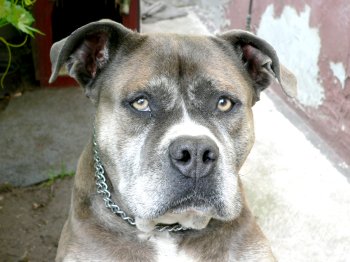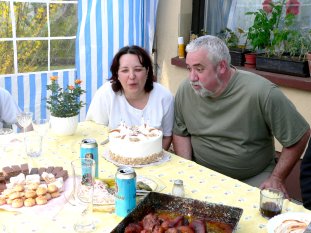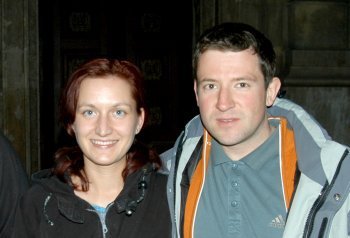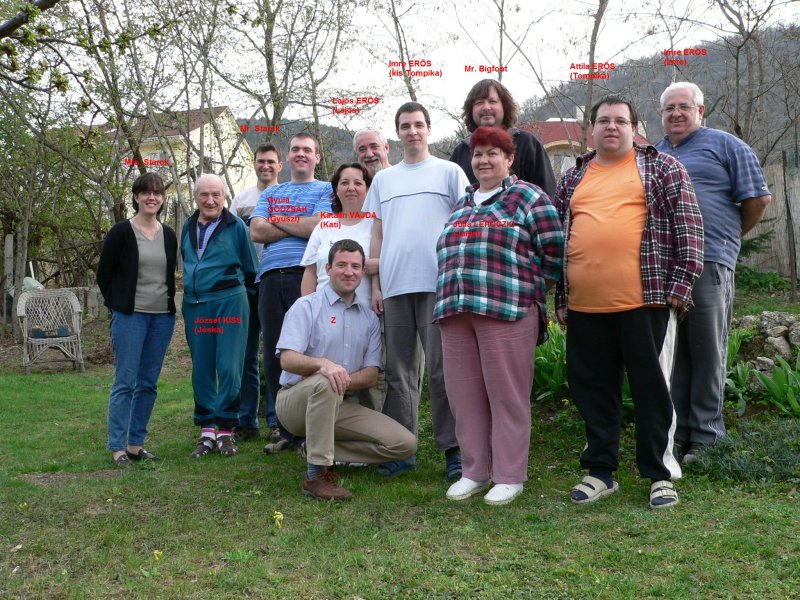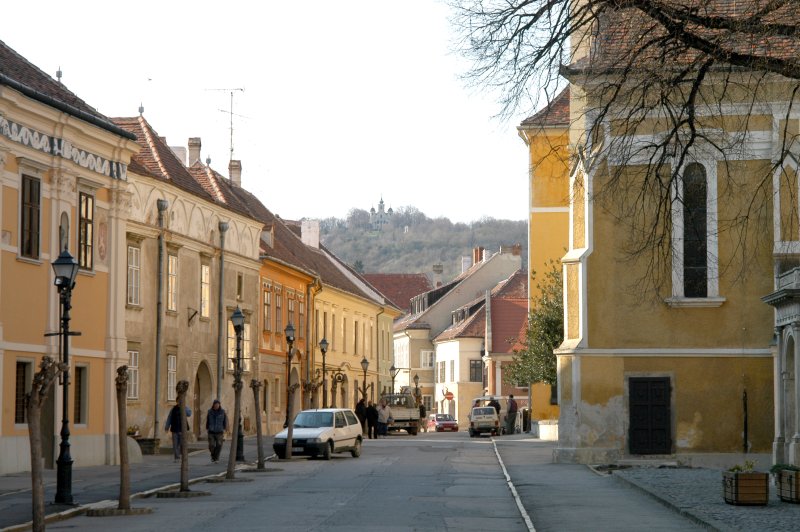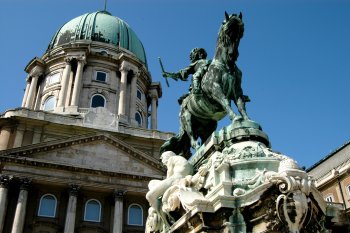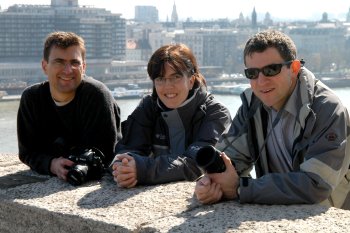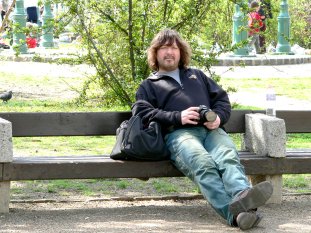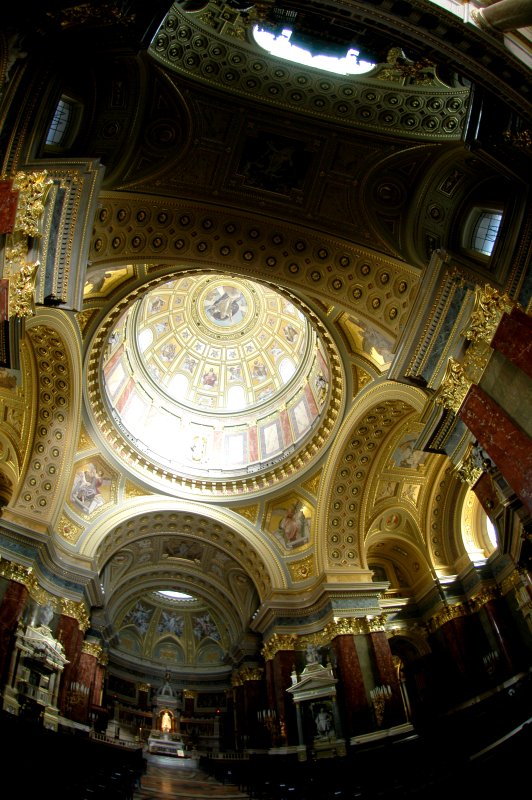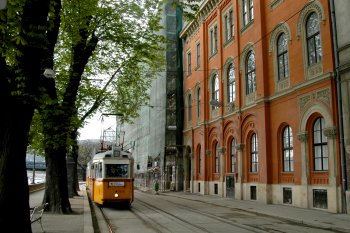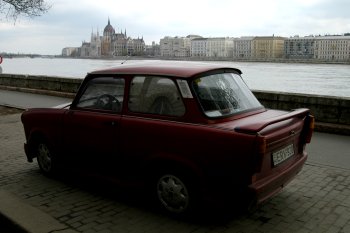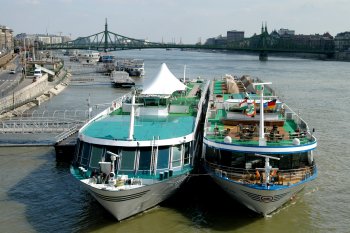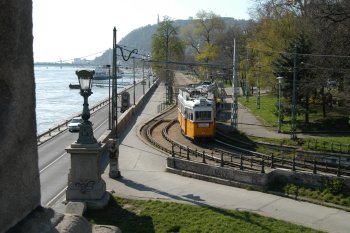|
Brian, Sue and Zoltan, alias "Z"; A
spaced-out Peter, alias "Cipofuzo", contemplating his next shot. |
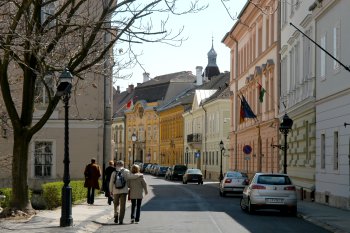 |
|
Well, celebrate we would later in the day back at the Kiss and extended
family household.
It being Easter weekend, there were quite a few people about enjoying the
good weather, including a fair number of tourists. Much to my annoyance, as we were on the spot, so to speak, we were not able
to get inside
Mátyás
Church, as significantly long queues had begun to form. |
|
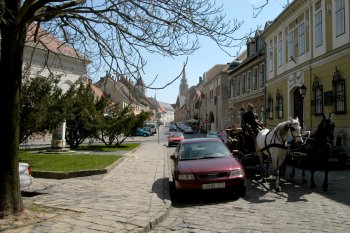 |
|
Images of the old town, including
Lords Street, once the home of aristocrats and merchants. |
|
|
|
Sue wasn't feeling well and
we were late for our appointment, so much as we would like to have spent
more time there, we headed back to the car. For Zoltan, bless his
soul, who went out of his way, it was a nightmare, trying to juggle and
satisfy the needs of these "bloody tourists".
To be honest, Zoltan is
such a good-natured fellow that it takes a lot to wind him up real good. I
suspect he enjoyed the experience of having us there and was proud to be
able to show us around his home town. Anyway, I kept him on his toes, as I
continually use oft-used idioms when expressing myself. The joke was
that Zoltan would constantly say "uh, I must get a pen and write that down,
so I don't forget these things". It made him laugh. He got his own back
though and thus it was that I acquired a nickname, "Cipofuzo", Hungarian for
shoe laces, presumably because mine were almost always undone. It rubbed off
on the others. After a brisk walk back to where we had parked the car,
trying to distract Peter from attempting any more photographs, Zoltan
stepped on the gas and "flew" back home along the bumpy roads to the suburb
of
Óbuda, located in district III. To be honest, that's the way he drove all the
time and is probably the best way to handle the bad road surface. En route,
he had to stop off at a confectionary store,
Daubner Cukrászda, in order to purchase a few items for the birthday
celebration. This included a Hungarian speciality that resembles a
large cake but is in fact an ice-cream tart known as
"Parfé torta" or "fagylalt torta". Kept in its container,
it doesn't seem to melt as quickly as conventional ice-cream.
Zoltan's family are true
salt-of-the-earth folk and though the obvious language barrier existed,
there was no doubting their kindness, good nature and genuine generosity,
itself embedded in Zoltan too.
A small tent had been set up
in the backyard and a table laid out for the occasion.
Lajos Eros and Kati
Vajda were celebrating their birthdays. They had already eaten, so we were
watched very closely as round after round of food was brought to the table.
A bowl of fruit punch was placed on the table yet my preference and request
for some red wine was acceded to without a moment's hesitation. Later we
were to sample some local aperitif. After blowing out the candles, the tart
was cut and shared all round, though, to be fair, I truly felt I was about
to burst and didn't really have the place for it. After this mighty feast,
which thankfully comes but once a year, we excused ourselves. I do not
recall whether we rested before or after the next stage of our schedule but
rest we did.
We drove to Gellért
Hill, which rises steeply from the Danube. It is one of the most attractive
sites because at a height of 140m, a stunning view of the whole of Budapest
is afforded one. n 1046, heathen citizens threw a sealed barrel containing
Bishop Gellért,
who was trying to convert them to Christianity, from the hill to his death,
so the tale goes. Afterwards, the hill was named after this martyr.
The hill is long regarded as a notorious spot. During the middle ages,
witches were even reputed to celebrate their sabbath here. The Gellért
Hotel and baths complex lie at the foot of the hill. Positioned high
on the hill is the Liberation Monument, designed to commemorate the
liberation of Budapest by the Russian Army in 1945. The central figure
on the monument is that of a woman holding aloft a palm leaf. The
arrival of the Russians in Budapest was a liberation but also the beginning
of Soviet rule. After Communism's fall, a figure of a Russian soldier was
removed from the monument and a plaque listing the Russian war casualties
was also transferred elsewhere. Dusk set in as we attempted to take
photographs in the fading light. |
|
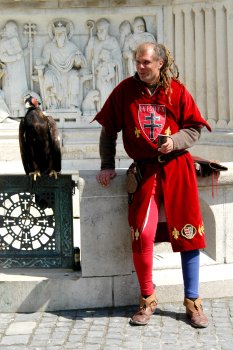 |
|
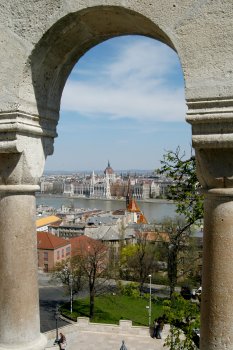 |
Until now I had
not mentioned that this was not my first visit to Budapest. I had been
here in 1988, one year prior to the collapse of the Berlin Wall and I had
walked to this hilltop with a Russian girl of Jewish extraction I had met at
the Great Synagogue in Pest. She had travelled to this city to meet the
father of her child, who had been living in Paris as an artist. They
were to meet to discuss the possibility of marriage that would effectively
have bought her freedom, which he declined. She was so terribly
disappointed but put on a brave face nonetheless. |
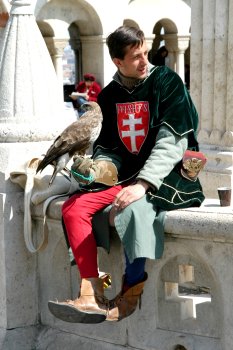 |
|
Festive Scenes around Fisherman's
Bastion over Easter weekend; View through an archway towards Parliament
building. |
|
|
|
Thus, when I boarded a train back to
Vienna from Keleti pu, the city's main train station, Elena Podbelskaya
was forbidden from doing the same, given the political situation at the
time. She later emigrated to Israel and married, I believe. It
is a pity that more time was not spent on this trip to visit to some of
the museums in the city such as the Great Synagogue, the National Gallery
at Castle Hill or the Museum of Fine Arts at Heroes Square, but I intend
this next time around.
Introducing Brian and
Sue to Rudas Baths
As luck would have it, on
Sundays Rudas Baths are opened to both sexes, though the requirements change
in that costumes are to be worn and towels brought along. It was fast
becoming accustomed to this luxury and generally felt that it was doing me
the world of good. Some very attractive woman arrived there that day
but I got the feeling that it probably attracted more tourists on that day
than on others. I found myself testing my tolerance levels. I would sit in
the hottest sauna room at 80 degrees centigrade for twenty minutes and then
upon leaving, force myself into the cold pool, which, to be honest, I could
not bear for more than 20 seconds. We returned our wet gear to the house and
after a brief rest, resumed our tour of the city. Parking near Chain
bridge as we had done the previous day, took the venicular up to the Castle
District in order to save time, purchasing return tickets in the process.
The purpose was to have a
quick look at the interior of Mátyás
Church. |
|
|
|

|
|
Rudas Turkish Baths beneath Gellért
Hill. |
|
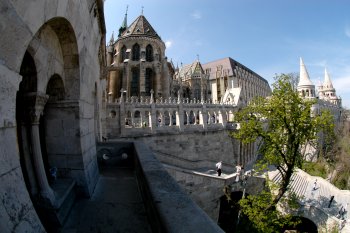 |
|
A Parish church was built on the site between the 13th and 15th centuries.
Though St István
(St Stephen), as the first crowned king of Hungary, was responsible for
accepting Christianity for the Hungarians, King Mátyás
Corvinus enlarged and embellished the church named after him. Much of the
original detail was lost when the Turks converted the church into the Great
Mosque in 1541. |
|
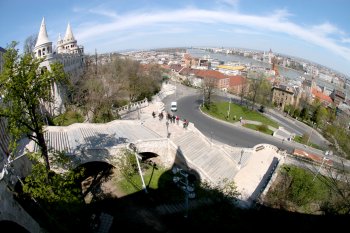 |
|
Mátyás
Church and Fishermen's Bastion, the conical towers an allusion to the
tribal tents of the early Magyars; View across the steps below
Fisherman's Bastion towards the Danube. |
|
|
|
During the liberation of Buda, the church was almost
totally destroyed but later rebuilt in Baroque style. The church sustained
more damage in 1723 and was restored in the Neo-Gothic style.
The most recognisable
buildings in Pest are the Houses of Parliament and St Stephens Basilica and
the State Opera House, all located in Pest. Hungary's Parliament
building is the country's largest building and is a symbol of Budapest.
Designed in a Neo-Gothic style by Imre Steindl and built between 1884 and
1902, it is based on the Houses of Parliament in London. Dedicated to St
Stephen or St
István,
the first Hungarian Christian King, the Basilica was designed in the
Neo-Classical style, using a Greek cross floor plan. Construction began in
1851 and was taken over by renowned Hungarian architect Miklós
Ybl in 1867, who added the Neo-Renaissance dome after the original one
collapsed in 1868. The church was completed in 1905. It received the
title of Basilica Minor in 1938, the 900th anniversary of St István's
death. The State Opera House was built to rival those of Paris, Vienna
and Dresden. It's beautiful architecture were the life's work of Miklós
Ybl.
Brian and Sue had seen none of
the Pest area. Bad weather set in making a walkabout difficult, so as I had
been into St Stephen's Basilica earlier in the week, Brian and Sue popped in
for a glimpse. We had a coffee at the large open square adjoining the church
and returned home. |
|
|
|
